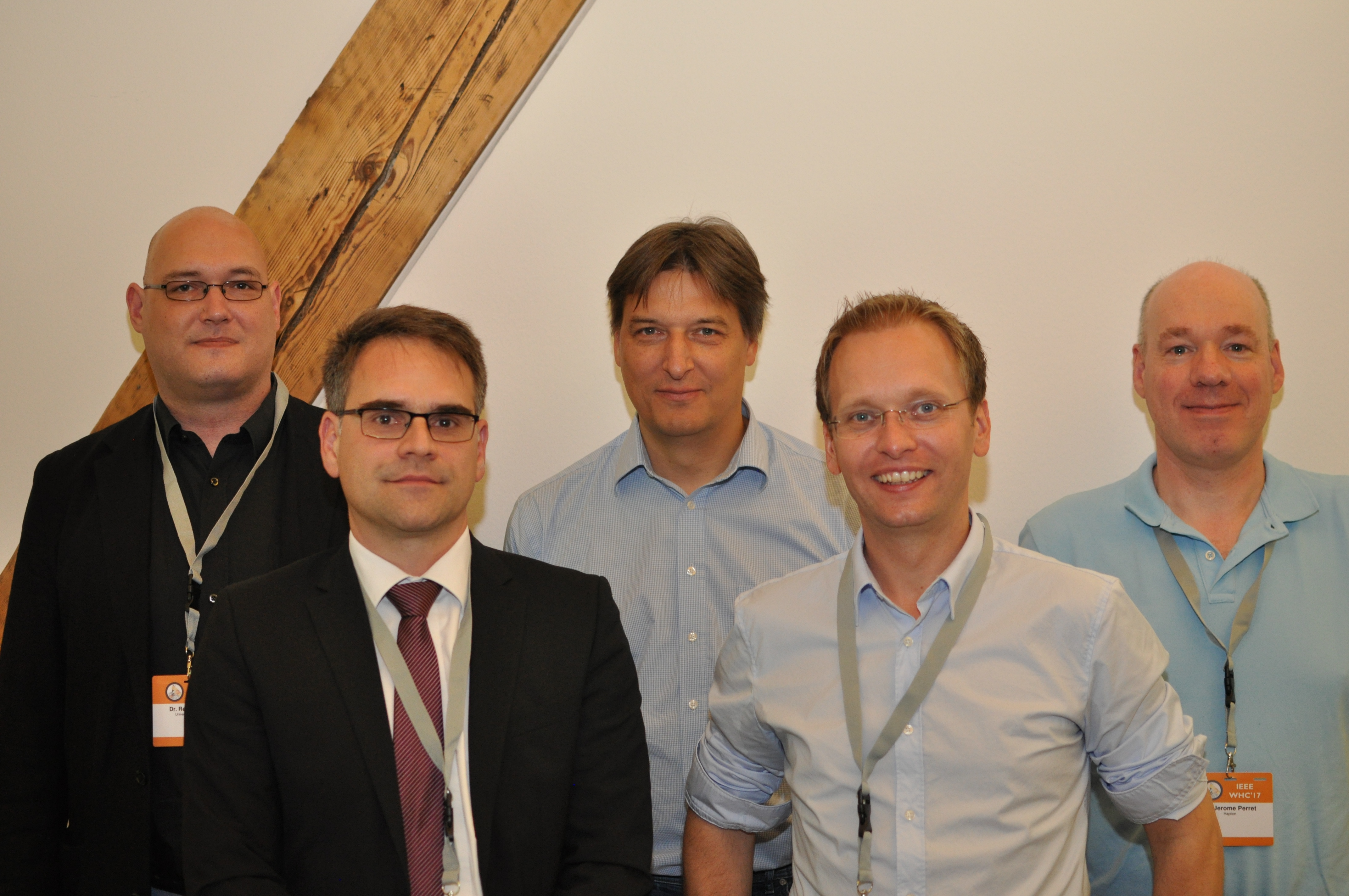Haptic Methods and Technologies for Virtual Assembly Simulations
A Workshop of the IEEE World Haptics 2017

Virtual assembly simulation has changed the product development process dramatically during the last years. It helps reducing time and costs during the product design development, e.g. by avoiding costly physical prototypes and mock-ups while additionally building the basis for product maintenance processes. While the majority of existing solutions provide pure visual feedback to the user, the haptic modality is only rarely represented in such applications, although it obviously helps to improve the immersion and realism of the simulation in general. In particular, in the case of poorly visible parts or completely occluded objects, haptic feedback becomes essential.
A typical virtual assembly system with support for haptics rests on five pillars:
- Virtual Reality The underlying VR technology that manages the objects in the scene graph, handles the real-time rendering and defines interfaces for the hard and software.
- Haptic Algorithm The haptic rendering algorithms that are responsible to compute forces and torques according the physical laws of motion. Here, collision detection and handling are the main challenges.
- Haptic Device The hardware haptic device that provides the force feedback to the user.
- Haptic Control The haptic controller that controls the haptic device and takes care of stability despite of computational time delay.
- Human Factors The system should be designed in a way that optimizes usability and overall system performance at the same time.
The goal of this workshop is to address all relevant aspects required for haptic assembly simulations and to give a comprehensive introduction and a broad overview to all of these five research domains. We will unite experts in all of these fields to (i) discuss together the state-of-the-art in current virtual assembly simulation, (ii) summarize the latest research findings and technological key innovations, (iii) interchange knowledge of related research pillars, and (iv) identify future trends and the major challenges for a scientific and technological breakthrough. We attach great importance to not restrict ourselves to an academic audience but also invite experts from the industrial field that are day-to-day either developing or using virtual assembly simulations.
Program
|
|
Ralf Rabätje, CTO
of vr-on GmbH |
|
|
Rene Weller,
University of Bremen |
|
|
Jerome
Perret, CEO of Haption S.A. |
|
|
Thomas
Hulin, DLR |
|
|
Bernhard
Weber, DLR |
Here you find additionally the slides from the introduction.
Audience
We aim to bring together academic researchers and people with an industrial background in this workshop. We are confident that this mixed audience will lead to mutually fruitful discussions and it could be the basis for further collaborations. We address not only experts in the fields but all people who are interested in the topic. Just a very basic knowledge about VR and virtual assembly could be helpful.
Our Speakers

Left to right: Rene Weller, Bernhard Weber, Ralf Rabätje, Thomas Hulin, Jerome Perret.
|
|
Ralf Rabätje, CTO
of vr-on GmbH |
|
|
Rene Weller,
University of Bremen |
|
|
Jerome
Perret, CEO of Haption S.A. |
|
|
Thomas
Hulin, DLR |
|
|
Bernhard
Weber, DLR |
The workshop is organized by Thomas Hulin and Rene Weller and will be held during the IEEE World Haptics 2017 on June 6th, 2017.

